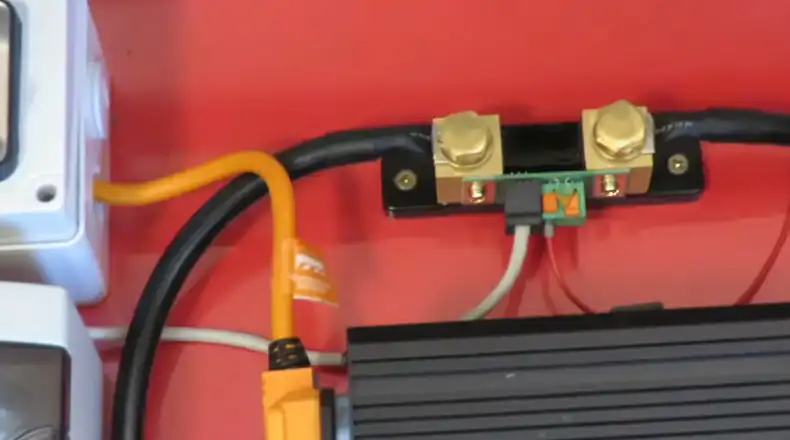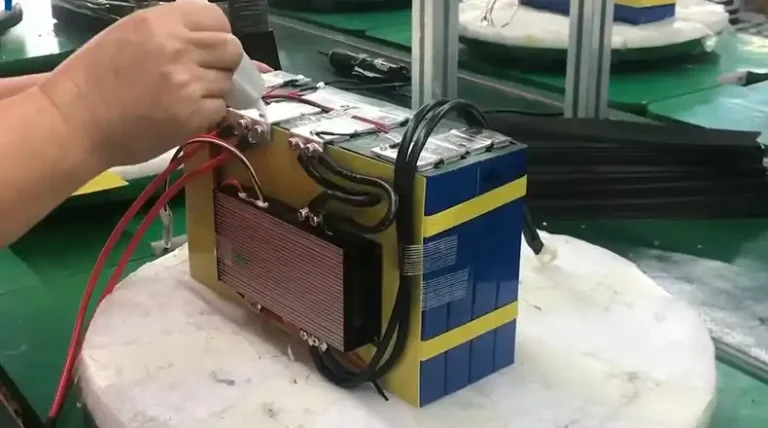What Is a Battery Shunt? Everything You Need to Know
A battery shunt is a device that measures the current flowing in or out of a battery. It is a critical component in many electrical systems, including off-grid solar power systems, electric vehicles, and battery-powered backup systems.
Battery shunts are relatively inexpensive and easy to install. They provide a number of benefits, including accurate state of charge monitoring, early detection of problems, and improved battery life.
In this article, we will discuss the basics of battery shunts, including what they are, how they work, and the benefits of using them.

What Does Battery Shunt Mean?
A battery shunt is essentially a precision resistor, but it’s not there to resist change; it’s there to measure it. Imagine it as the weighing scale for your electrical system. When your system is on a diet of power, the battery shunt helps you keep track of exactly how many calories, erm, amps, are coming in and going out. This measurement is critical for various reasons, including safety, maintenance, and ensuring the longevity of your batteries.
Here are the components of a battery shunt –
- Shunt resistor: A low-value resistor that measures current flow by creating a voltage drop.
- Voltage sense terminals: Connect to the battery bank and shunt resistor to measure the voltage drop.
- Enclosure: Houses the shunt resistor and voltage sense terminals.
How Does It Work?
Okay, so it’s a measurement tool. But how exactly does a battery shunt pull off this electric balancing act? Well, it operates based on a principle known as the Hall Effect. No, this isn’t the Hall of Justice, but it’s still quite impressive.
The Hall Effect is a fundamental physics phenomenon where a voltage difference occurs across a conductor when a magnetic field is applied perpendicular to the current flow. In simpler terms, the battery shunt uses magnets and a little electrical wizardry to calculate the flow of electricity through it.
Now, when current flows through the shunt, a voltage is generated, and this voltage is proportional to the current. This measurement is then interpreted by the system’s monitoring equipment to provide you with data on how much power your batteries are receiving or delivering. It’s like the scoreboard at a baseball game but for your power system.
Is Using a Battery Shunt Important?
Absolutely, and here’s why. Suppose you’re driving a car, but your dashboard is blank – no speedometer, no fuel gauge, nothing. How would you know when you’re running low on gas or if your engine is overheating? A battery shunt plays a similar role in your power system; it provides essential information that helps you avoid disasters.
When you know how much power is flowing in and out of your batteries, you can prevent overcharging or over-discharging, both of which can be catastrophic for battery health. It’s like having a personal trainer for your power system, ensuring it doesn’t get too exhausted or become a couch potato. So, in short, using a battery shunt is not just important; it’s a smart move.
How and Where Battery Shunt is Used?
A battery shunt is installed on the negative terminal of a battery bank. This is because the negative terminal is common to all of the loads that are connected to the battery bank. By installing the shunt on the negative terminal, all of the current flowing in or out of the battery bank will flow through the shunt.
The shunt is typically installed as close to the battery bank as possible. This is to minimize the length of cable between the battery bank and the shunt, which can reduce the accuracy of the measurement.
Battery shunts are versatile and find their home in various applications. Here’s a glimpse into where and how they’re used:
- Off-grid solar power systems: Battery shunts are used to monitor the state of charge of the battery bank and to ensure that the solar panels are providing enough current to charge the batteries.
- Automotive World: In your car, battery shunts help monitor the charge and discharge of your vehicle’s battery. They ensure you don’t end up stranded with a flat battery in the middle of nowhere.
- Renewable Energy Systems: Solar and wind power systems often rely on batteries to store excess energy. Battery shunts here keep tabs on the energy flowing in and out, optimizing the use of renewable power.
- Marine Environments: On boats, where energy is typically drawn from battery banks, shunts monitor and protect the batteries from overuse or abuse, extending their lifespan.
- Industrial and UPS Systems: In these setups, battery shunts are crucial for continuous power supply, ensuring batteries are healthy and ready to jump into action when needed.
Benefits of Using a Battery Shunt
Using a battery shunt isn’t just a precaution; it’s a smart strategy with numerous benefits:
- Accurate state of charge monitoring: Battery shunts provide the most accurate way to monitor the state of charge of a battery bank. This is because they measure the current flowing in or out of the battery bank, which is directly proportional to the state of charge.
- Overcharge protection: A shunt can be used to trigger an overcharge protection system, which will shut off the charging source if the battery reaches a certain voltage.
- Undercharge protection: A shunt can also be used to trigger an undercharge protection system, which will warn the user if the battery is being discharged too deeply.
- Load shedding: A shunt can be used to trigger a load shedding system, which will disconnect non-essential loads from the battery bank if the battery is discharged below a certain level. This can help to extend the runtime of the battery bank.
Is There Any Alternative to Battery Shunt?
There are a few alternatives to battery shunts, but they are not as accurate or reliable. One alternative is to use a battery monitor that uses a voltage-based algorithm to calculate the state of charge of the battery. However, this type of battery monitor is not as accurate as a battery monitor that uses a shunt.
Another alternative is to use a battery monitor that uses a coulomb counting algorithm to calculate the state of charge of the battery. Coulomb counting is a more accurate way to measure the state of charge of a battery than voltage-based methods. However, coulomb counting battery monitors are more expensive and complex than voltage-based battery monitors.
Overall, battery shunts are the most accurate and reliable way to measure the state of charge of a battery bank. They are also relatively inexpensive and easy to install.
Final Thoughts
Battery shunts are an essential tool for accurately monitoring the state of charge of a battery bank. They are used in a variety of applications, including off-grid solar power systems, electric vehicles, and battery-powered backup systems. The benefits of using a battery shunt include accurate state of charge monitoring, early detection of problems, and improved battery life.
Short Questions and Answers
1. What is the lifespan of a typical battery shunt?
Battery shunts are built to last, with a typical lifespan ranging from 10 to 20 years, depending on usage and environmental conditions. Regular maintenance and keeping them within their rated capacity can further extend their longevity.
2. Can I install a battery shunt myself, or do I need a professional?
Installing a battery shunt is a task best left to professionals or experienced DIYers. It involves precise electrical work and should comply with safety standards. If in doubt, consult with an expert to ensure a proper installation.
3. Do all battery shunts use the Hall Effect for measurement?
No, while the Hall Effect is a common method for measuring current, some battery shunts use different techniques like resistive shunts or electromagnetic coils for current measurement. The choice depends on the specific application and desired accuracy.
4. Can a battery shunt help me save on my electricity bill at home?
Battery shunts are more commonly used in off-grid or backup power systems. However, grid-tied systems with energy storage can help you monitor and optimize your energy usage, potentially leading to cost savings over time.
5. Are battery shunts compatible with all types of batteries?
Most battery shunts are compatible with various battery chemistries, including lead-acid, lithium-ion, and more. However, it’s essential to ensure that the shunt’s specifications align with the specific requirements of your battery system for accurate measurements and safety.



![Best Solar Companies in San Jose | [2024 Guide]](https://www.itekenergy.com/wp-content/uploads/2024/03/Best-Solar-Companies-in-San-Jose-768x428.webp)


